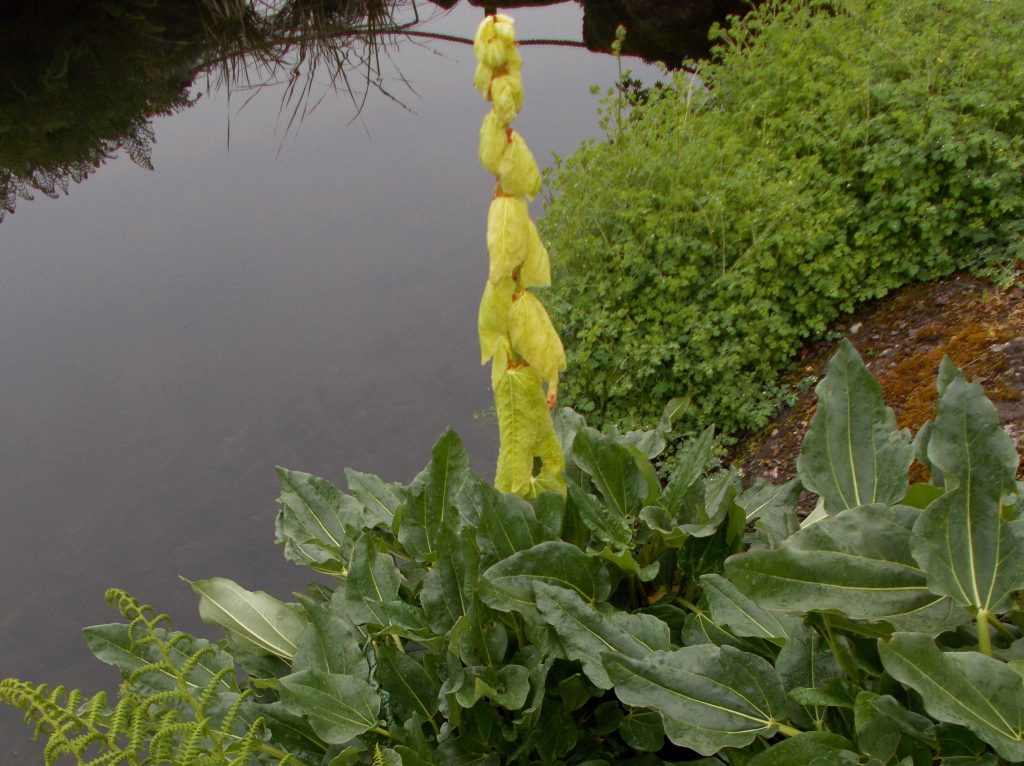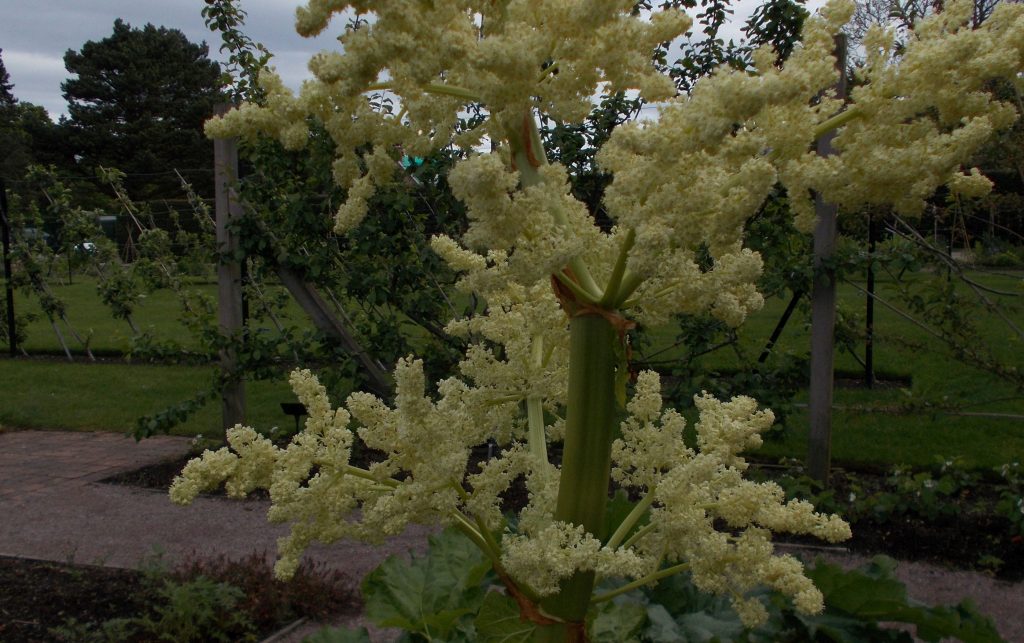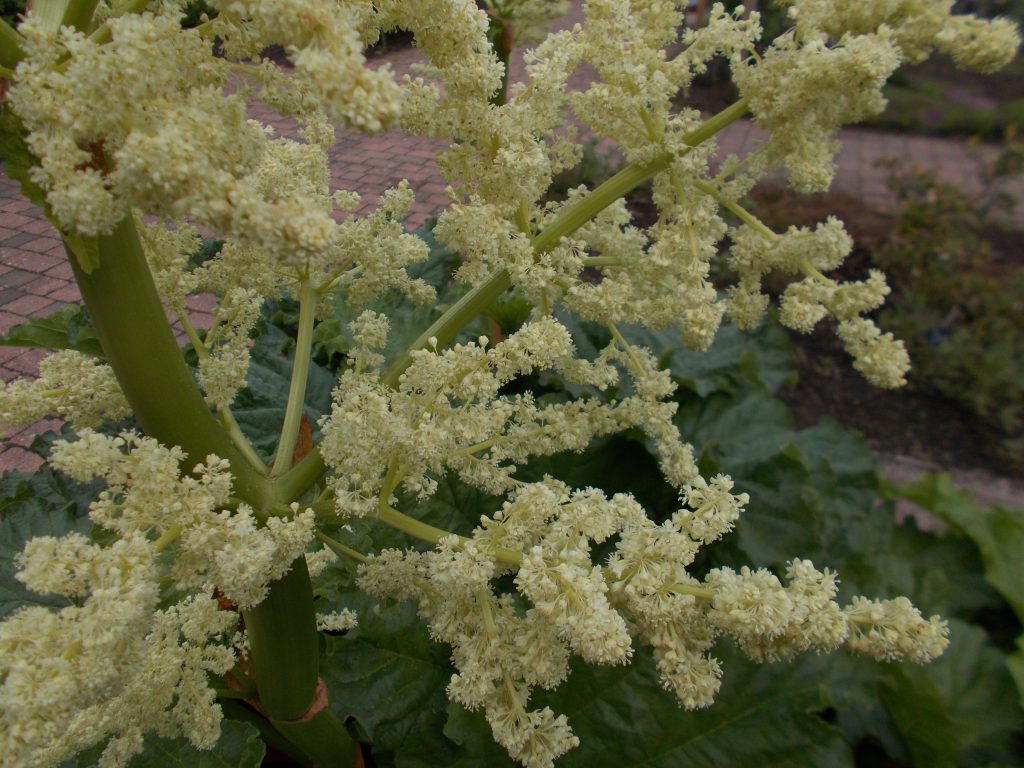When the clump of Rhubarb in your garden sends up a flower spike this is the time to stop pulling the stalks for stewing down. The elongated leaf stalk is traditionally, forced into growth using an upturned metal dustbin or traditionally a terracotta forcer. Once the flower stalk is seen; either snap it off at ground level or keep looking back to admire the statuesque form. In full bloom, the flower stalk itself is a magnificent display containing many panicles of creamy white flowers with an agreeable scent. Growing to 2 metres it has the potential, with an enriched organic root run and weather permitting, to reach 3 meters. A good addition to the back of the border where the expansive foliage can grow without smothering out companion planting. Once past mid-summer, especially in a dry year keep mulched with bulky organic matter. At this time it will also appreciate an occasional bucket of water, otherwise the leaves flop and shrivel. For a much more impressive Rhubarb visit the Rock Garden where Rheum alexandrae is growing beside the stream. A native to wet meadows of SW China this plant has a mound of foliage, much smaller than cultivated Rhubarb, growing from a rhizomatous rootstock. The flower stalk is to be appreciated, covered in drooping creamy white bracts that overlap each other down the stem. These conceal the flowers which in contrast to the cultivated Rhubarb are almost insignificant.



